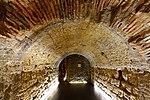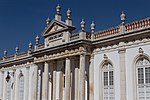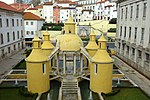University of Coimbra

The University of Coimbra (UC; Portuguese: Universidade de Coimbra, pronounced [univɨɾsiˈðaðɨ ðɨ kuˈĩbɾɐ]) is a public research university in Coimbra, Portugal. First established in Lisbon in 1290, it went through a number of relocations until moving permanently to Coimbra in 1537. The university is among the oldest universities in continuous operation in the world, the oldest in Portugal, and played an influential role in the development of higher education in the Portuguese-speaking world. In 2013, UNESCO declared the university a World Heritage Site, noting its architecture, unique culture and traditions, and historical role.The contemporary university is organized into eight faculties, granting bachelor's (licenciado), master's (mestre) and doctorate (doutor) degrees in nearly all major fields. It lends its name to the Coimbra Group of European research universities founded in 1985, of which it was a founding member. Enrolling over 20,000 students, more than 15% of whom are international, it is one of Portugal's most cosmopolitan universities.Coimbra's alumni over the centuries include Portugal's national poet Luís de Camões, the mathematician Pedro Nunes, many statesmen, prime ministers and presidents of Portugal, and Nobel Prize laureate António Egaz Moniz.
Excerpt from the Wikipedia article University of Coimbra (License: CC BY-SA 3.0, Authors, Images).University of Coimbra
Pátio das Escolas, Coimbra Alta (Coimbra (Sé Nova, Santa Cruz, Almedina e São Bartolomeu))
Geographical coordinates (GPS) Address Phone number Website External links Nearby Places Show on map
Geographical coordinates (GPS)
| Latitude | Longitude |
|---|---|
| N 40.2074 ° | E -8.4265 ° |
Address
Faculdade de Direito
Pátio das Escolas
3000-295 Coimbra, Alta (Coimbra (Sé Nova, Santa Cruz, Almedina e São Bartolomeu))
Portugal
Open on Google Maps







